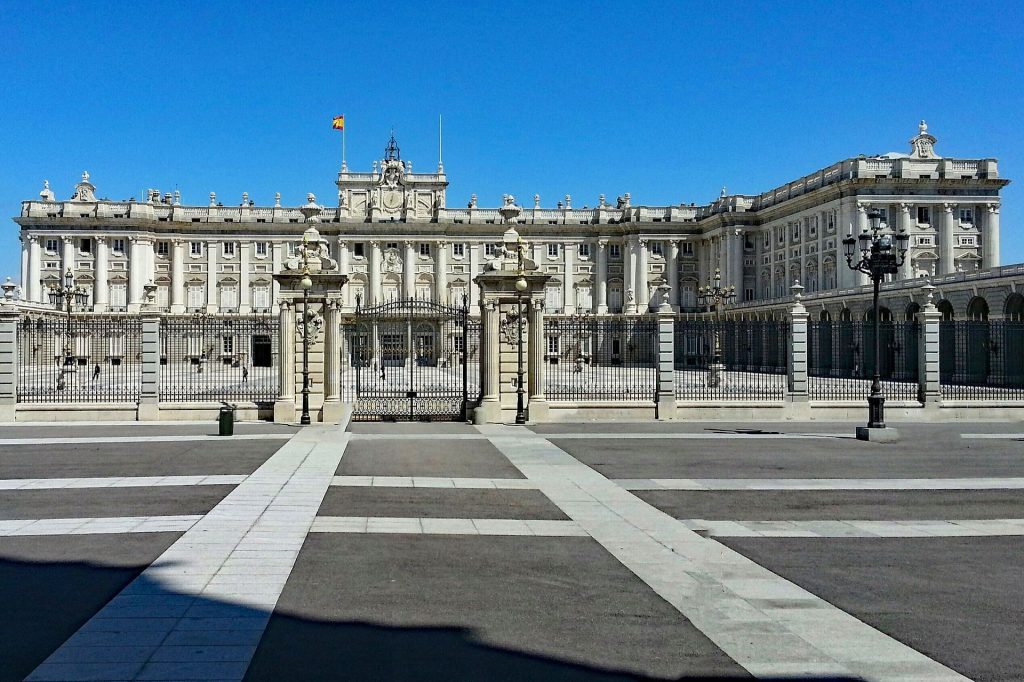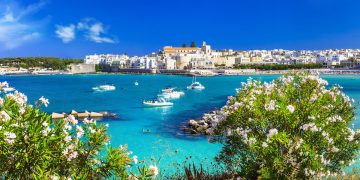The Royal Palace of Madrid, as the official residence of the Spanish Royal family, is not only one of the largest royal palaces in Spain, but also one of the oldest royal palaces in Europe, with a deep historical background and unique cultural characteristics.
Historical background
The history of the Royal Palace in Madrid dates back to the reign of the Bourbons in Spain. Since 1700, Charles II, the last king of the Habsburgs, was childless and passed on to the Duke of Anjou, later Philip V, of the French Bourbon family. After Philip V settled in Madrid, he ordered the construction of the palace to serve as the residence of the Spanish royal family. Since then, the Royal Palace of Madrid has become the center of power of the Spanish royal family, witnessing the rise and fall of Spanish history.
Over the course of its history, the Royal Palace of Madrid has experienced several twists and turns. The Bourbons lost control of Spain several times, but since the restoration in 1975, the Spanish royal family has been composed of members of the Bourbon family. The palace was thus preserved and continued to be the residence of the royal family until the royal family no longer lived in it, and it was turned into a museum for visitors to visit.

Architectural style
The architectural style of the royal Palace of Madrid combines the traditional Spanish royal family and Baroque style, showing a unique and gorgeous artistic charm. The appearance of the palace is square structure, with white and gold as the main tone, magnificent, giving people a solemn and sacred feeling. The exterior walls are beautifully decorated, and the stone corridors and beautifully carved iron fences add to its solemn and sacred atmosphere.
Enter the interior of the palace and you will be struck by its ornate decoration and exquisite layout. Each room is beautifully decorated, whether it is murals, tapestries, furniture, furnishings, all reflect the highest level of craftsmanship and artistic value. Especially the main palace Hall and the Royal Auditorium, these halls are breathtaking frescoes and artworks, showing the glory and glory of the Spanish royal family.
Main attraction
Main Palace Hall: As the largest hall in the palace, the main Palace Hall is lavishly decorated and elaborate. Huge crystal chandeliers and ornate tapestries add a strong palace atmosphere to the hall. Once a place where the royal family held important celebrations and received foreign envoys, it is now a must-visit place for tourists to appreciate the gorgeous decoration of the palace.
Royal Hall: This is a grand hall, richly decorated and filled with a strong religious atmosphere. Once the site of royal weddings and coronations, it is now an important place for visitors to experience the religious culture of the Spanish royal family.
Isabella II Room: This is a beautifully decorated bedroom with gorgeous furnishings and decorations. The room is full of feminine atmosphere, showing the elegance and charm of Spanish royal women.
In addition, the palace also contains numerous gold and silver vessels, porcelain, rare treasures, paintings, precision machinery and other royal articles. These precious works of art and cultural relics not only reflect the glory and glory of the Spanish royal family, but also demonstrate the profound heritage of Spanish culture.

Cultural characteristics
The cultural characteristics of the Royal Palace in Madrid are mainly reflected in its traditional costumes, cultural exchanges and religious influences. Inside the palace, visitors can enjoy the display of traditional Spanish costumes, which are brightly colored and beautifully patterned, reflecting the passion and creativity of the Spanish people. At the same time, the palace also holds various cultural exchange activities, such as art exhibitions, concerts, etc., so that visitors can have a deeper understanding of Spanish culture and art. In addition, religion played an important role in the culture of the Spanish royal family, which was reflected in the religious ceremonies and religious artworks in the royal palace.
Travel advice
Best time to visit: The Royal Palace is open all year round, but given Spain’s climate, spring and autumn are the best times to visit. At this time the climate is pleasant, neither too hot nor too cold, very suitable for outdoor activities and visits.
How to get there: Visitors can choose to take the metro or bus to the Royal Palace in Madrid. Madrid metro network developed, a number of lines direct to the palace near; Bus is also a convenient and fast way of transportation. In addition, if visitors want to get a deeper understanding of the sights of downtown Madrid, they can also choose to walk or cycle.
Ticket prices: Ticket prices for the Royal Palace in Madrid vary according to the season and type of visitor. Generally speaking, ticket prices in the peak season will be slightly higher than in the off-season. Visitors can check the latest ticket price information on the official website and book in advance to ensure a smooth visit.
Note: When visiting the Royal Palace in Madrid, visitors are required to observe the relevant rules and etiquette. For example, do not touch or damage artifacts and works of art, keep quiet and respect the experience of other visitors. At the same time, tourists also need to pay attention to take care of personal belongings, to ensure that the tour process is safe and pleasant.
The Royal Palace of Madrid is a shining pearl in Spain, which attracts tourists from all over the world to visit with its profound historical background, unique architectural style, rich cultural characteristics and many major attractions. For both history lovers and culture seekers, the Royal Palace of Madrid is a must-visit destination. By visiting this palace, visitors can gain an in-depth understanding of Spanish history and culture, feel the glory and splendor of the royal family, and experience an unforgettable journey.





















